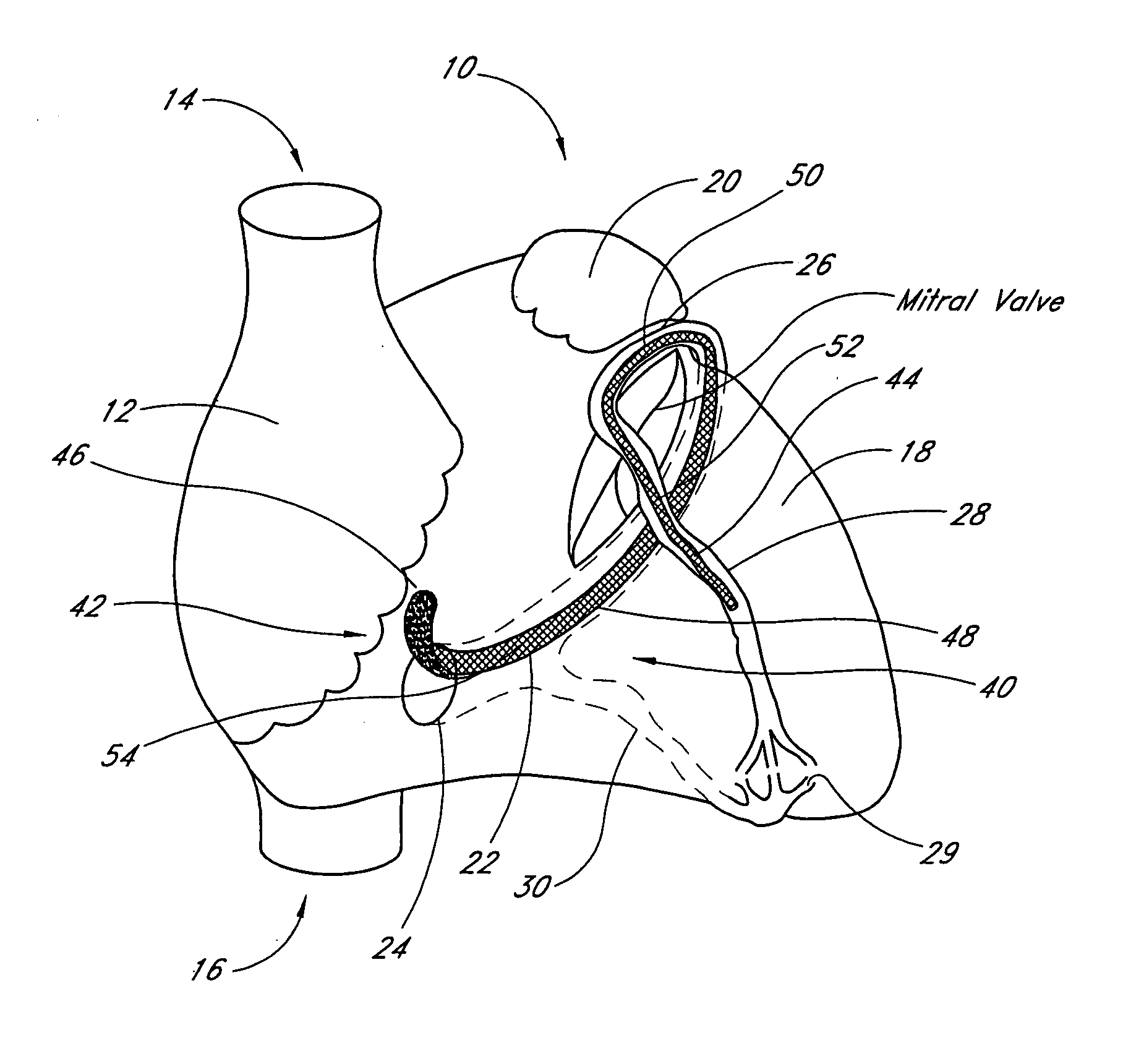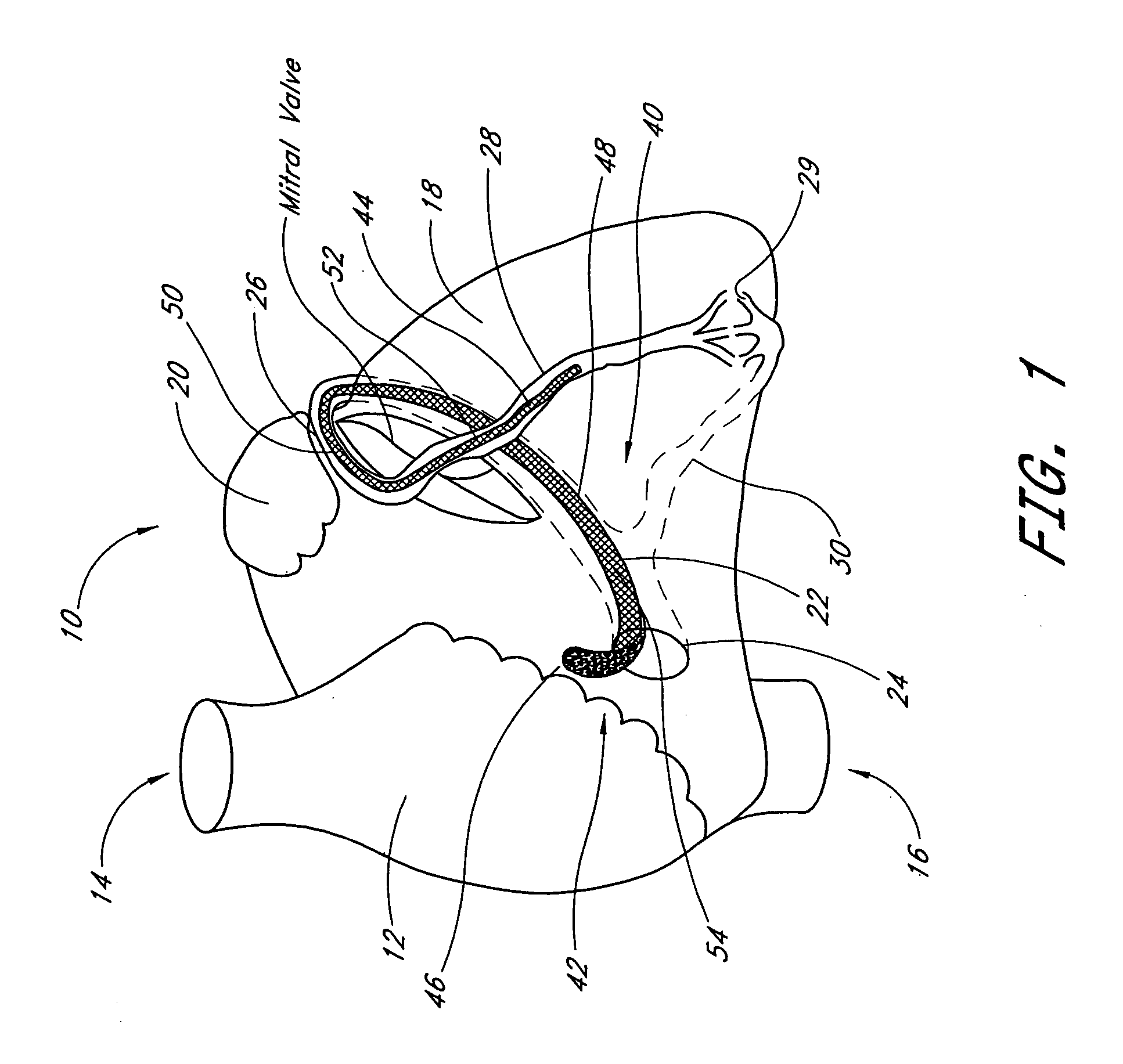Transluminal mitral annuloplasty
a technology of mitral annuloplasty and transluminal stent, which is applied in the field of transluminal stent annuloplasty, can solve the problems of congestive heart failure, pulmonary venous pressure and cardiac output reduction, and progressive enlargement and worsening of mitral regurgitation
- Summary
- Abstract
- Description
- Claims
- Application Information
AI Technical Summary
Benefits of technology
Problems solved by technology
Method used
Image
Examples
second embodiment
[0073] the device does not contain an axially moveable forming element. Instead, a core of springy memory material such as nitinol or other NiTi alloy is pre-formed to have the required configuration. When the device is pushed out of the delivery catheter into the coronary venous system, the spring force within the core applies the requisite force to remodel the annulus. This embodiment does not require a tensioning element or a tool to disconnect it from the delivery system. However, the magnitude of force applied to the annulus cannot be adjusted.
third embodiment
[0074] A third embodiment is deployed as a loop through the coronary venous system, to form a left ventricular girdle 100. See FIGS. 5-6. The ventricular girdle 100 comprises an elongate flexible body 102 having a proximal end 104 and a distal end 106. A first control line 108 extends proximally from the proximal end 104, and a second control line 110 extends distally from distal end 106. The first and second control lines 108 and 110 may be different portions of the same wire, which extends continuously throughout the length of the body 102. The wire may be a single strand or multi strand component, a length of hypodermic needle tubing, a spring coil, or other structure known in the medical guidewire arts. Preferably, the first and second control lines have a diameter within the range of from about 0.009″ to about 0.018″, although larger diameters may also be used particularly for the first control line 108.
[0075] The distal control line 110 is advanced through an introducer sheath...
PUM
 Login to View More
Login to View More Abstract
Description
Claims
Application Information
 Login to View More
Login to View More - R&D
- Intellectual Property
- Life Sciences
- Materials
- Tech Scout
- Unparalleled Data Quality
- Higher Quality Content
- 60% Fewer Hallucinations
Browse by: Latest US Patents, China's latest patents, Technical Efficacy Thesaurus, Application Domain, Technology Topic, Popular Technical Reports.
© 2025 PatSnap. All rights reserved.Legal|Privacy policy|Modern Slavery Act Transparency Statement|Sitemap|About US| Contact US: help@patsnap.com



